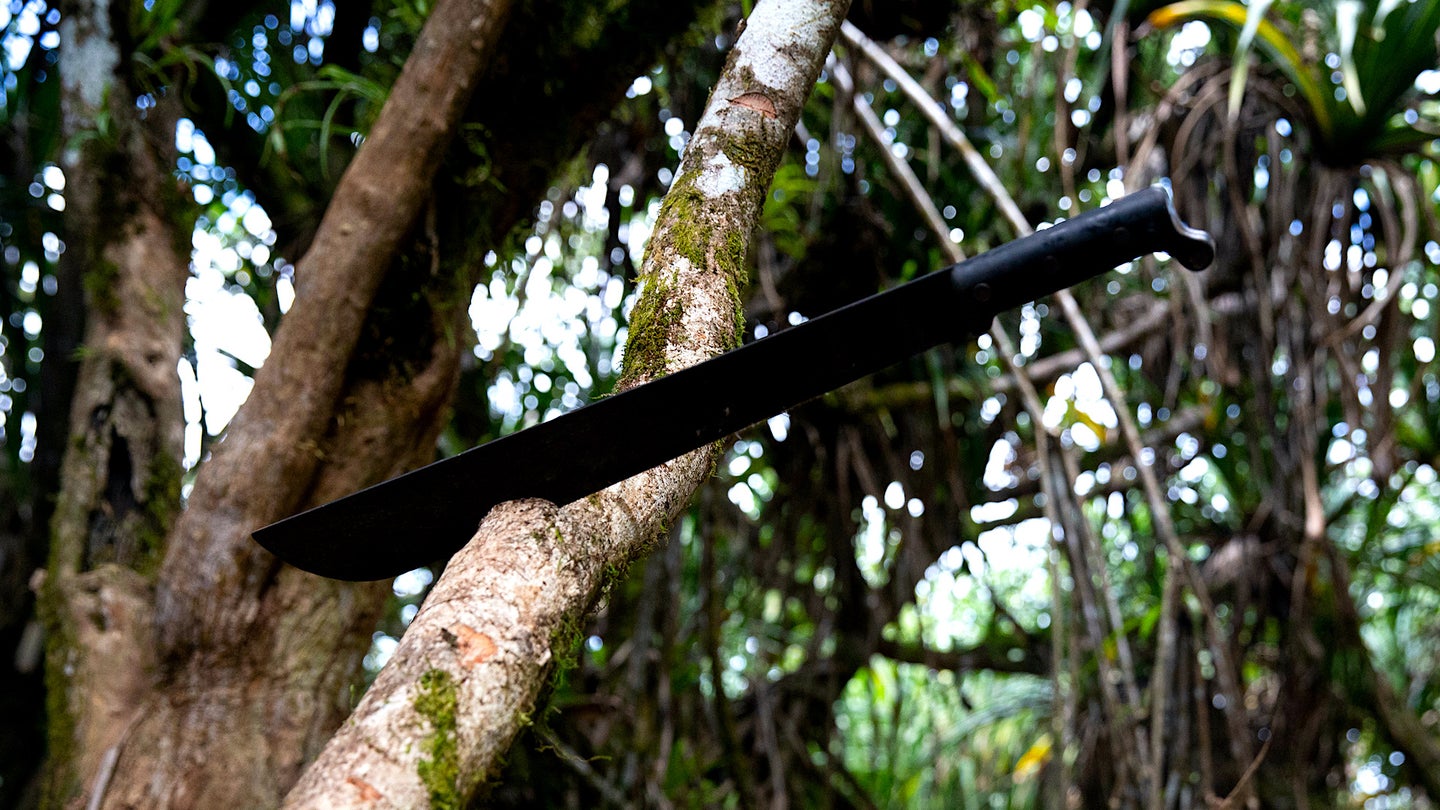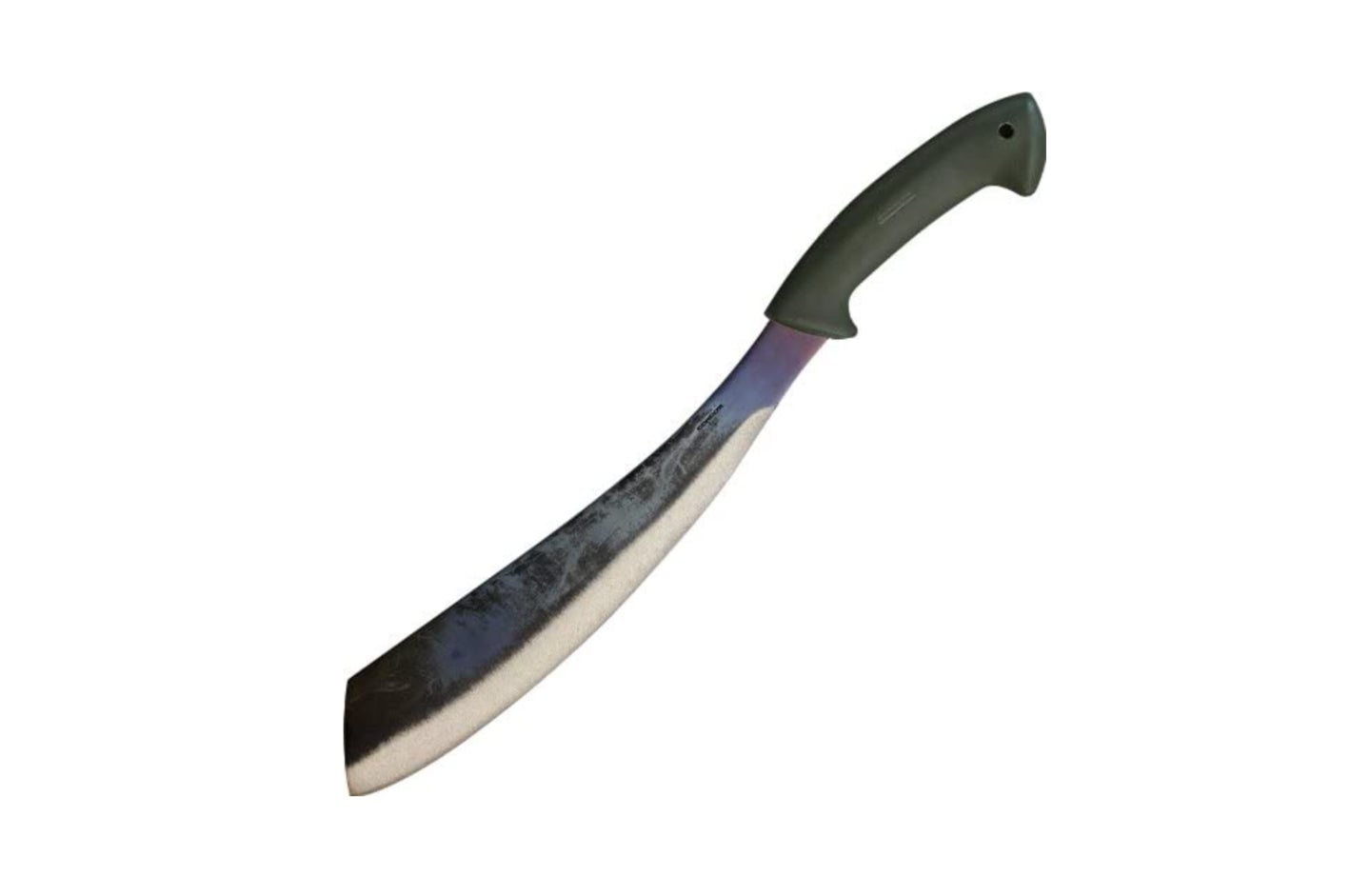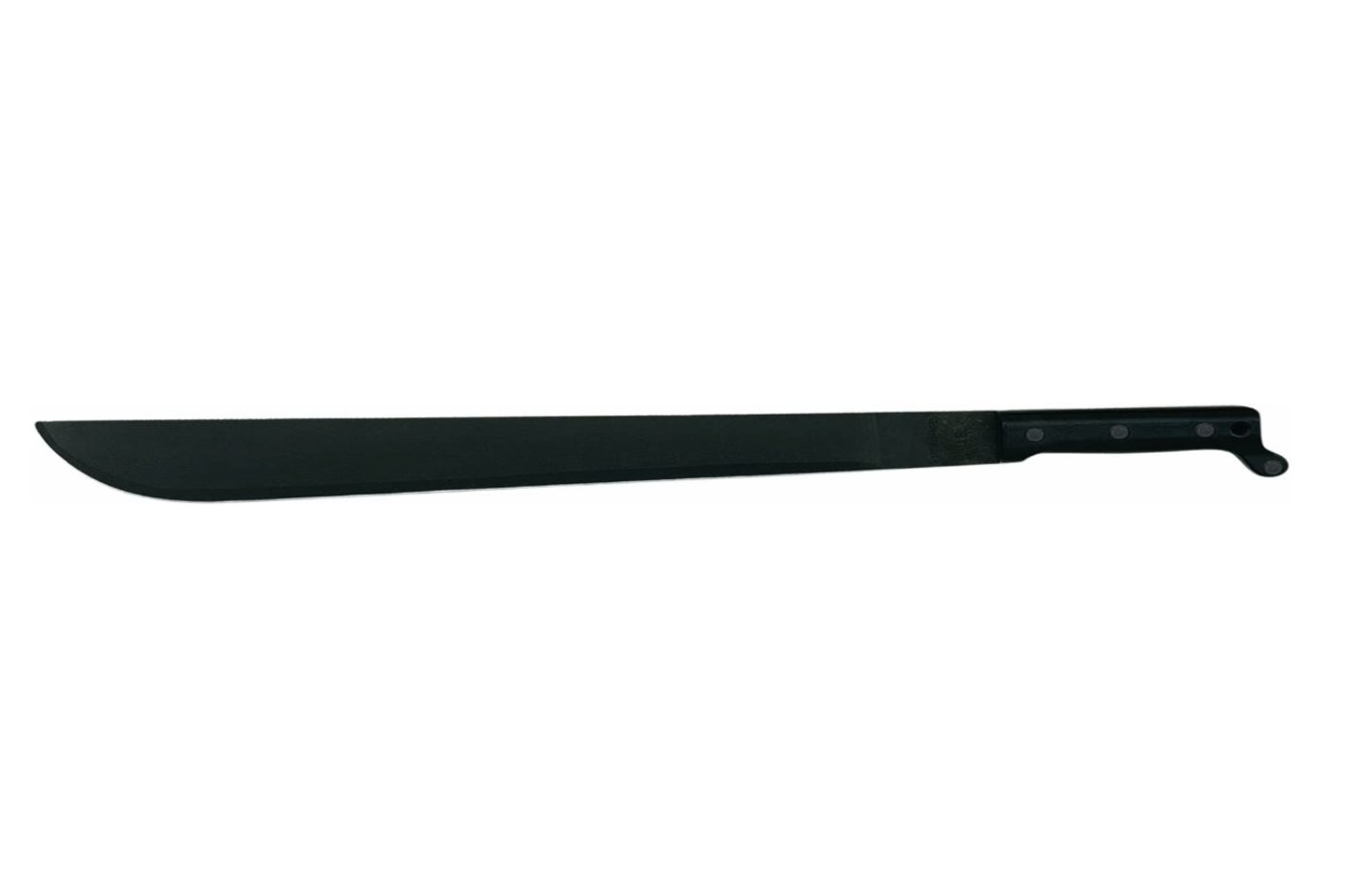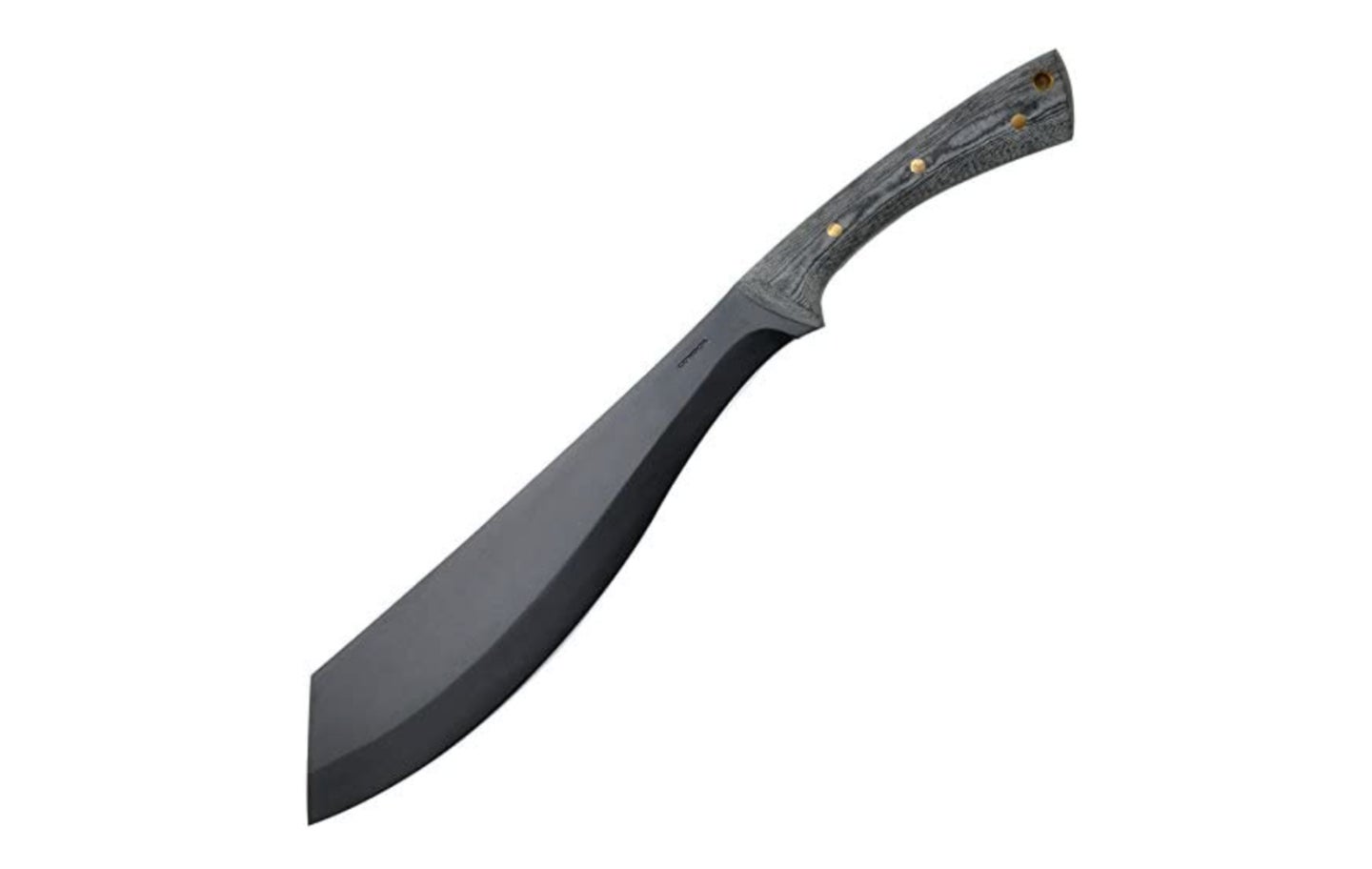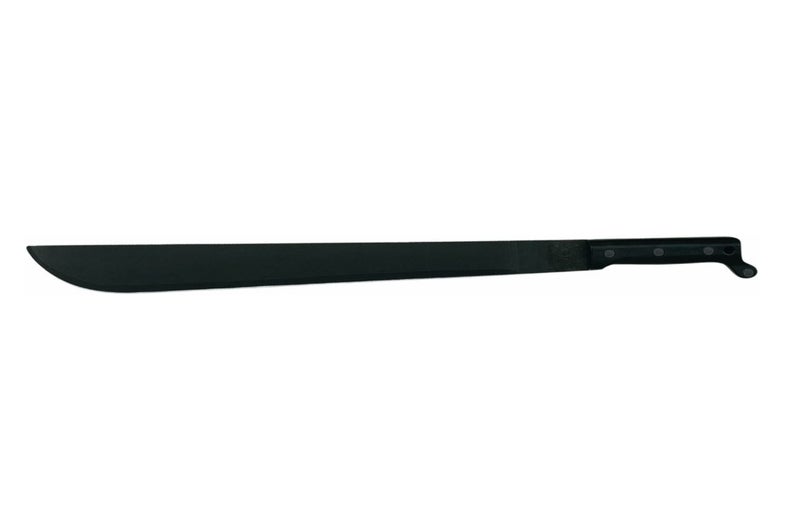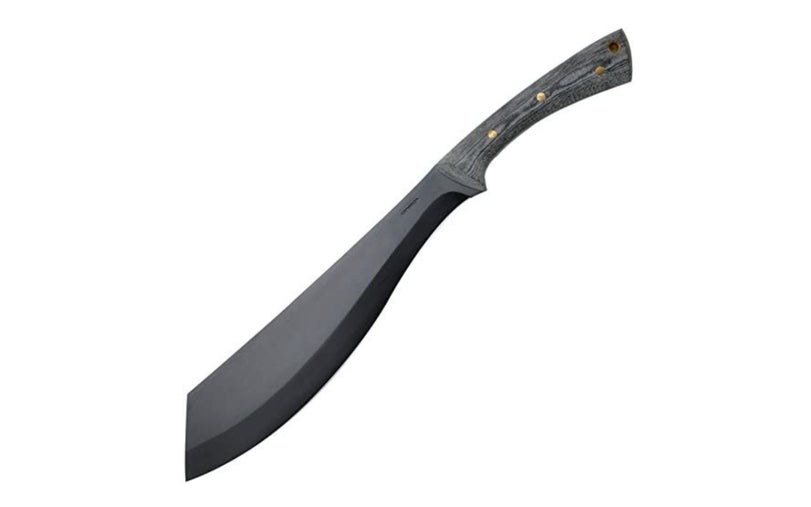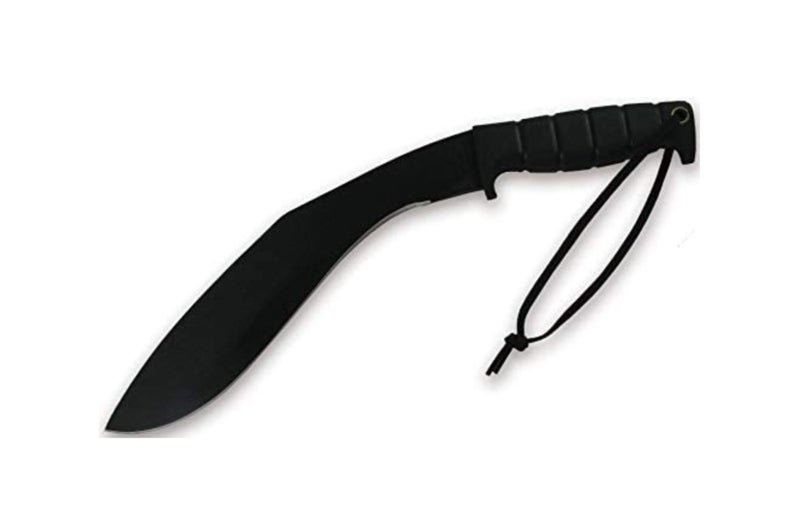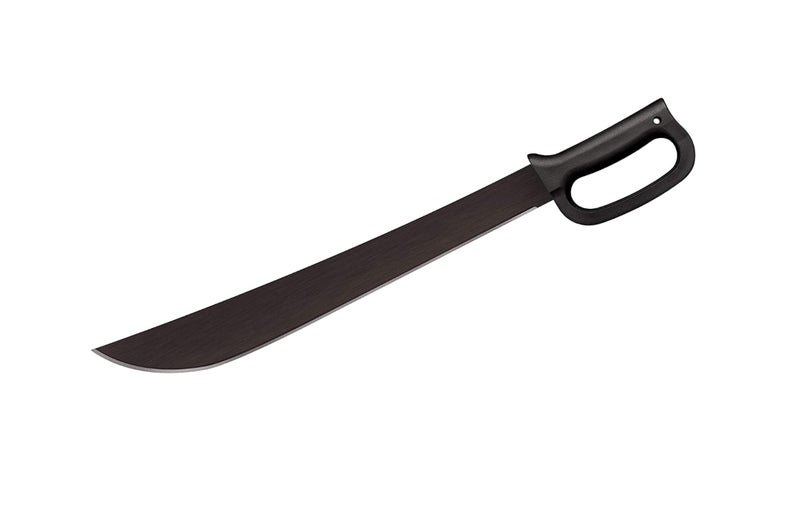We may earn revenue from the products available on this page and participate in affiliate programs.
There are blades where quality is emphasized over quantity, and there are others where quantity is given priority. Unfortunately, many machetes fall in the latter category, with low-quality steel, dubious heat treats, and terrible handles. Most are designed as expendable tools, where they’ll see minimal use and plenty of abuse, whether that’s due to lack of maintenance or overexposure to the environment.
However, machetes are one of the most useful blades out there, with a history of combat use and farm utility. Plus, overall, they’re extremely handy to have around the campfire or garden. We’re not the biggest fan of perishable implements that break when you need them most, so we’ve rounded up a list of some of the best machetes on the market.
- Best Overall: Condor Bushcraft Parang Machete
- Best Value: Ontario Knife Company 18″ Military Machete
- Best Premium: Condor Warlock
- Best Kukri: Ontario Knife Company Kukri
- Best Tactical: Cold Steel 18″ Latin D-Guard Machete
A division of the Salvadoran company Imacasa, Condor Tool & Knife is known for making tough, practical designs at a great price, and this machete certainly lives up to that expectation. The Bushcraft Parang is one of its most popular models due to its thick, rugged blade made from 1075 high carbon steel. A convex edge ensures maximum strength for chopping, while the forward center of gravity yielded by the parang chandong blade shape makes it a joy to swing during extended use.
This Joe Flowers design is made for chopping and, as a result, was given an ergonomic, shock-absorbing polypropylene handle that fills the hand, ensuring hours of comfortable use, whether hacking your way through the jungle or splitting wood. The pommel curves slightly around your hand to prevent any chance of it slipping out of your grip. While there is an inch or two of unsharpened blade near the handle, it’s not really a problem, as you won’t be using that area to chop with. In addition, it gives you a safe area to grip, just in case you find yourself having to choke up on the blade for feather-sticking or similar tasks. Just make sure you keep it clean and oiled to stave off corrosion.
- Blade length: 13 inches
- Blade material: 1075
- Blade finish: Natural/satin
- Handle material: Polypropylene
- Blade shape: Parang Chandong
- Sheath material: Nylon
- Weight: 1.66 pounds
Convex edge for edge stability when chopping
Ergonomic handle
High carbon steel for toughness
No corrosion-resistant coating
Designed under government contract for U.S. military use, the 1-18 military machete has been manufactured by Ontario Knife Company for over 70 years and remains one of the best bang-for-your-buck machetes out there. This M1942-pattern machete has proven itself time and time again across multiple continents in various combat theaters, and chances are your local military surplus store has several behind the counter. While milsurp stores tend to charge a premium for this budget option, Ontario has made new production 1-18 machetes available direct to the civilian market at an extremely affordable price.
A decidedly spartan design in accordance with its martial origins, the 1-18 has a simple Latin blade shape made from tough, 1095 high carbon steel heat-treated to 50-55 HRC. This allows it to hold up to heavy use without chipping or breaking, while the black zinc-phosphor coating keeps rust at bay. This blade is especially adept at clearing through brush or long grass, even after it starts to get dull, courtesy of its full flat grind. Our main complaint is that it doesn’t come with any sort of sheath, but Ontario has those available for purchase separately should you need one.
- Blade length: 18 inches
- Blade material: 1095
- Blade finish: Zinc-phosphor coating
- Handle material: Polymer
- Blade shape: Latin
- Weight: 1.33 pounds
Made in USA
Corrosion-resistant coating
Also available in 22-inch version
High carbon steel for toughness
Doesn’t come with sheath
Poor factory edge
Another Salvadoran design from Joe Flowers, this is a decidedly more premium option than the Bushcraft Parang we chose for our best overall option. While it’s also a parang chandong-type blade, there are several distinct differences. Perhaps the most noticeable is the sheath. Instead of the nylon sheath of its sibling, the Warlock comes with a handcrafted, welted-leather sheath. Two straps on the top snap in place to secure the blade, while the welt increases the longevity of the sheath by keeping the edge from damaging the black leather’s stitching.
The second most obvious change to this well-balanced blade is the premium micarta handle, held in place with three sturdy brass rivets, as well as a brass lanyard tube near the pommel. While this isn’t necessarily more ergonomic than the polypropylene handle of the Bushcraft Parang, it’s more durable and looks incredible. Lastly, Condor added a black epoxy powder coating, ensuring that, should you forget to clean and oil it every once in a while, the Warlock will still be able to fight off rust.
- Blade length: 12.5 inches
- Blade material: 1075
- Blade finish: Black epoxy powder-coat
- Handle material: Micarta
- Blade shape: Parang Chandong
- Sheath material: Leather
- Weight: 2.07 pounds
Corrosion-resistant coating
Handcrafted sheath
High carbon steel for toughness
Leather sheath more prone to moisture damage
Ontario Knife Company is well-known for its older military contract blades, like the 1-18 Military Machete and the PSK (Pilot Survival Knife), but it also has plenty of newer models that have become popular, like the Rat II and Rat 3. Lesser known is the OKC Kukri.
Kukris have a storied history of being used as a do-it-all blade by Gurkha soldiers, whether that be as a combat knife, machete, or general utility. The recurved blade is fantastic for chopping, as the forward center of balance does most of the work for you, and Ontario takes it a step further with the addition of a Kraton handle that harkens back to that of a Kopis or Falcata. Kraton is an extremely durable material that’s not only grippy, but also shock absorbent, making it a fantastic choice for a chopping implement.
The opposing hooks at the handle’s ends do a fantastic job of locking your hand in place, preventing any chance of the grooved handle slipping from your grasp, or even worse, having your hand slide forward onto the blade itself. There’s also a brass lanyard tube, should you feel the need for added retention. The blade is made from 1095 high carbon steel, which is considerably better than the no-name steel used in most kukris. The only downside is its lack of corrosion resistance, but thanks to its black powder coating, even rust won’t stand in the way of this being your favorite delimber blade.
- Blade length: 12 inches
- Blade material: 1095
- Blade finish: Black powder coat
- Handle material: Kraton
- Blade shape: Kukri
- Sheath material: Nylon
- Weight: 1.2 pounds
Made in USA
Corrosion-resistant coating
High carbon steel for toughness
A little short and light for some tasks
While this machete might seem more reminiscent of a cutlass, it’s actually more akin to the Field Machete from Ontario Knife Company. While both have a D-shaped handguard made from polymer, Cold Steel has made a name for having extremely ergonomic products that are tough as nails, and this machete is no exception. The Latin D-Guard machete is supremely comfortable in the hand, with no major hotspots.
The blade is made from 1055 high carbon steel, which prioritizes toughness. Not the best edge retention, but let’s be honest, you’re probably not planning to shave with this. Another huge advantage that this has over the Ontario machete is the addition of a nylon sheath, which Cold Steel calls “Cor-Ex.” Unfortunately, this machete is made in South Africa and usually comes with a poor edge, but that’s easily touched up with a puck sharpener or file.
- Blade finish: 18 inches
- Blade material: 1055
- Blade finish: Black baked-on anti-rust matte finish
- Handle material: Polypropylene
- Blade shape: Latin
- Sheath material: Cor-Ex
- Weight: 1.14 pounds
Offered in three different blade lengths
Corrosion-resistant coating
High carbon steel for toughness
Poor factory edge
Made in South Africa
Things to consider before buying a machete
Machetes come in many different forms and sizes. No matter what task you have in mind or what your local restrictions are, it’s probable that you’ll easily find a machete that suits your needs. You can find them at pretty much any sporting goods store or online, and they’re available at pretty much every price point.
Types of machetes
Fixed blade
This is by far the most common type of machete and with good reason. Simple to make, and even simpler to maintain, a fixed blade machete doesn’t rely on a locking mechanism that might fail. Rather, the blade is fixed in the handle so that it doesn’t move, and is stored in a sheath when not in use. The biggest concern with a fixed blade machete is ensuring that it has a full tang, instead of a fragile rat-tail tang. Thankfully, there aren’t many of these, but it’s still something to be leery of.
Folding
Drastically less common than fixed blade machetes, there aren’t many folding machetes on the market, and the few that do exist are often more difficult to open than fixed blades are to unsheath. Some, like the Gerber DoubleDown, require two hands to be able to open and close and have disproportionate handle-to-blade ratios. Others, like the Cold Steel Rajah II, are easier to open, but still have a bemusingly long handle compared to the blade.
Key features of a machete
Steel type
With very few exceptions, the vast majority of machetes will be made from high-carbon steel. This is in part due to its inherent toughness, but also due to how inexpensive it is. There are a few stainless steel machetes, but frequently these are no-name stainless steel machetes that are lacking quality control and durability, making them more a hazard to yourself than whatever you might have to hack through.
Blade length
Most common machetes are going to have blades between 12 and 18 inches long. There are examples that are shorter, but you have less leverage and reach with those. Longer models are decently common, such as the Ontario 22” Military Machete, however, those are more difficult to use, as the increased length can cause more hand and shoulder fatigue.
Blade shape
There are quite a few different blade shapes used for machetes, all with differing uses. One of the most common types is the Latin blade shape, which features a straight-backed blade, relatively simple in design. These are typically thinner and used more for clearing grass and brush, while thicker blade shapes like the Parang and Kukri are more commonly used for chopping and hacking through tougher mediums like logs and trees.
Handle materials
While antique machetes mostly used wooden handles that weren’t the most comfortable or durable, most modern machetes use some form of polymer. Aside from typically having better ergonomics and being more durable, polymer handles have a much better track record for not splintering with age. More premium offerings will feature man-made materials such as micarta and G10, which are even more wear-resistant.
FAQs about machetes
You’ve got questions, Task & Purpose has answers.
Q: Are machetes legal?
A: In general, if you’re camping or using it for normal tasks around the farm or backyard, yes. However, there are so many different state, city, county, and municipality laws out there that it’s impossible for us to cover them all in the scope of this article. It’s always best to double-check your local laws and restrictions. KnifeUp.com is a fantastic source for up-to-date information.
Q: How much does a machete usually cost?
A: Most budget machetes are going to be extremely affordable, sitting at around $30 to $50. Mid-tier machetes are typically a little better quality, costing between $50 and $150, while high-end machetes simply go up from there. For practical uses, we’d stick with machetes in either the budget or mid-tier ranges.
Q: Why do machetes frequently come with poor factory edges?
A: A mix of budget-minded blades and poor quality control. Many manufacturers expect that you’ll be either beating the heck out of it or that you’ll be capable of honing the edge if desired. And, to an extent, they’re not wrong. You’re likely not going to need a 20,000 grit, 17-degree edge on a machete; it wouldn’t hold up to any serious use — unless, of course, you fancy yourself to be Rambo in need of a shave.
Final thoughts
We scoured the depths of the machete mania to sort through all the less-than-stellar options out there, and the blades we found are proof of this. The time-tested 1-18 Military Machete easily took the best budget blade, due to its durability and impressive price. The Condor Bushcraft is a great choice for the average user that needs a comfortable blade that’ll last them decades. Meanwhile, the Condor Warlock is hands-down our favorite machete that we’ve ever handled, with a premium micarta grip, fantastic balance, and beautiful sheath.
Methodology
I’ve been collecting and selling knives for nearly a decade and was even a blacksmith’s apprentice for a while. I’ve also written extensively about the subject for Task & Purpose. In addition to writing guides about Damascus knives, utility knives, and karambits, I’ve also reviewed individual blades like the Cold Steel American Lawman, WE Stonefish, Leatherman Curl, Cold Steel Storm Cloud, QSP Penguin, and Spyderco Slip Stone. Bluntly put, I’m a nerd — pun intended.
For this article, we used recommendations shared in forums around the internet, particularly a handful of Facebook groups for knife enthusiasts. We relied on these sources because the members tend to provide better feedback than what you’d find in product review sections on most knife websites.
The machetes we selected came highly recommended because of their overall quality and performance. We looked for blades that were durable, versatile, and easy to maintain. We considered things like the materials used for the blade, handle, and sheath, as well as the manufacturer’s reputation for quality control. We specifically looked for blades that were corrosion-resistant, either due to them being stainless steel, or having a protective coating if they were high carbon steel. Wooden handles were avoided due to their tendency to splinter and retain moisture. Lastly, we eliminated any machetes that had partial tangs or thin rat-tail tangs, due to their tendency to be weaker than full tangs.
For more information on our methodology and product reviews, check out the Task & Purpose review guidelines.
